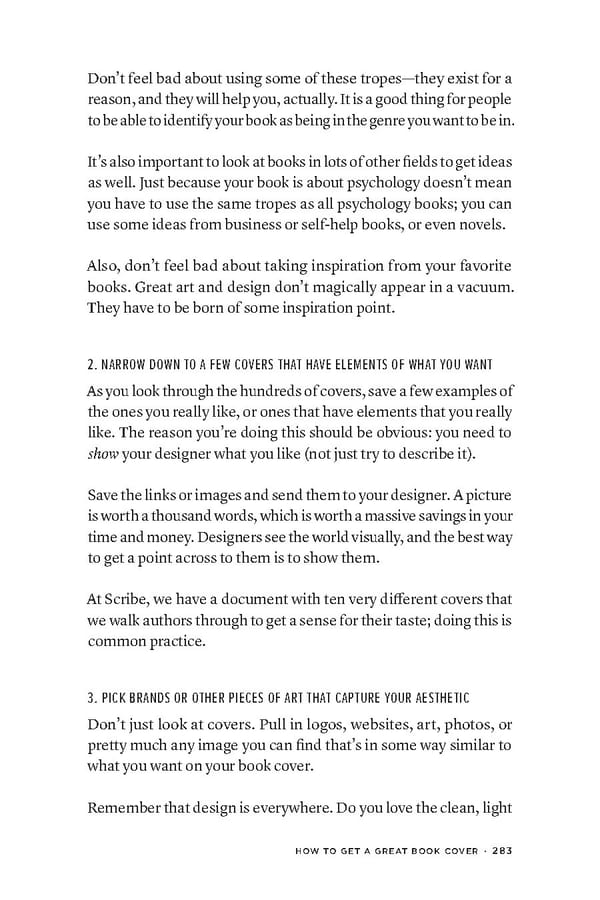Don’t feel bad about using some of these tropes—they exist for a reason, and they will help you, actually. It is a good thing for people to be able to identify your book as being in the genre you want to be in. It’s also important to look at books in lots of other fields to get ideas as well. Just because your book is about psychology doesn’t mean you have to use the same tropes as all psychology books; you can use some ideas from business or self-help books, or even novels. Also, don’t feel bad about taking inspiration from your favorite books. Great art and design don’t magically appear in a vacuum. They have to be born of some inspiration point. 2. NARROW DOWN TO A FEW COVERS THAT HAVE ELEMENTS OF WHAT YOU WANT As you look through the hundreds of covers, save a few examples of the ones you really like, or ones that have elements that you really like. The reason you’re doing this should be obvious: you need to show your designer what you like (not just try to describe it). Save the links or images and send them to your designer. A picture is worth a thousand words, which is worth a massive savings in your time and money. Designers see the world visually, and the best way to get a point across to them is to show them. At Scribe, we have a document with ten very different covers that we walk authors through to get a sense for their taste; doing this is common practice. 3. PICK BRANDS OR OTHER PIECES OF ART THAT CAPTURE YOUR AESTHETIC Don’t just look at covers. Pull in logos, websites, art, photos, or pretty much any image you can find that’s in some way similar to what you want on your book cover. Remember that design is everywhere. Do you love the clean, light hOW TO gET A grEAT BOOk COvEr · 283
 The Scribe Method by Tucker Max Page 282 Page 284
The Scribe Method by Tucker Max Page 282 Page 284